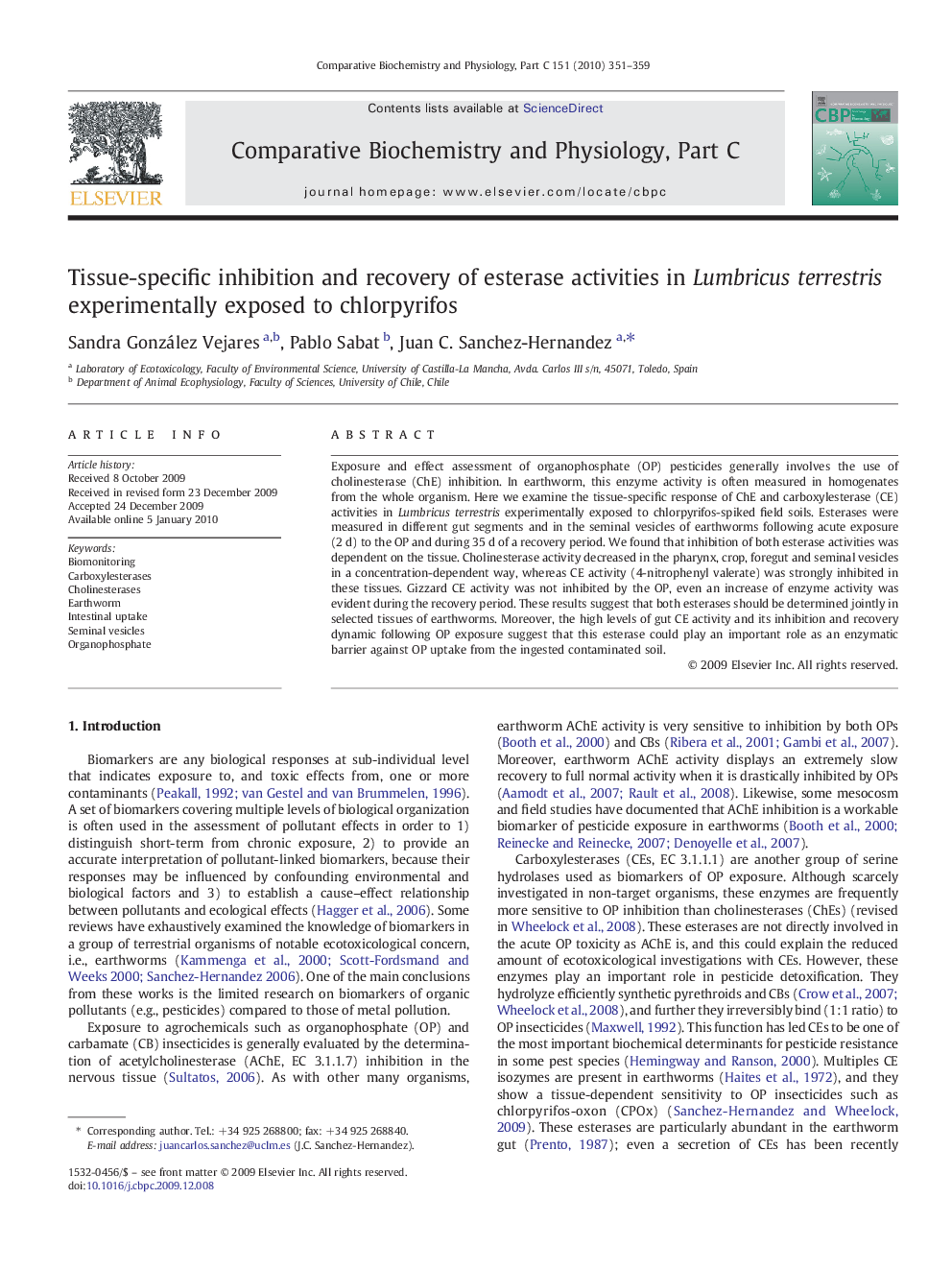| Article ID | Journal | Published Year | Pages | File Type |
|---|---|---|---|---|
| 1977703 | Comparative Biochemistry and Physiology Part C: Toxicology & Pharmacology | 2010 | 9 Pages |
Exposure and effect assessment of organophosphate (OP) pesticides generally involves the use of cholinesterase (ChE) inhibition. In earthworm, this enzyme activity is often measured in homogenates from the whole organism. Here we examine the tissue-specific response of ChE and carboxylesterase (CE) activities in Lumbricus terrestris experimentally exposed to chlorpyrifos-spiked field soils. Esterases were measured in different gut segments and in the seminal vesicles of earthworms following acute exposure (2 d) to the OP and during 35 d of a recovery period. We found that inhibition of both esterase activities was dependent on the tissue. Cholinesterase activity decreased in the pharynx, crop, foregut and seminal vesicles in a concentration-dependent way, whereas CE activity (4-nitrophenyl valerate) was strongly inhibited in these tissues. Gizzard CE activity was not inhibited by the OP, even an increase of enzyme activity was evident during the recovery period. These results suggest that both esterases should be determined jointly in selected tissues of earthworms. Moreover, the high levels of gut CE activity and its inhibition and recovery dynamic following OP exposure suggest that this esterase could play an important role as an enzymatic barrier against OP uptake from the ingested contaminated soil.
